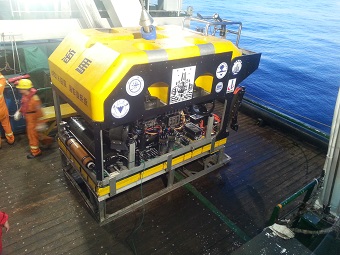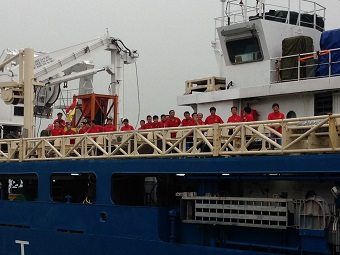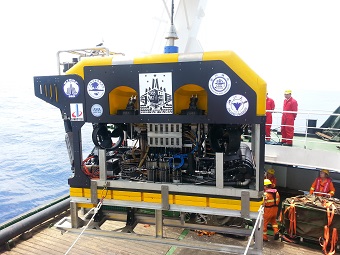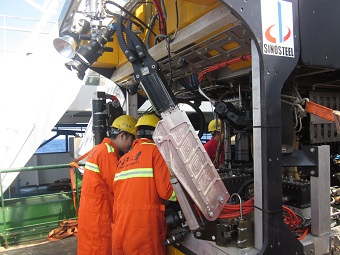From February 20th to April 22nd, the first 4,500-meter deep-sea remote-controlled unmanned submersible operating system “HaiMa” developed by China took the “Ocean No. 6” comprehensive scientific research ship and was tested in three regions in the South China Sea. On April 18th, the sea trial field expert group appointed by the 863 Marine Technology Office deemed itas a success.
The development of "Hai Ma" is a key project supported by the863 Program. It is the unmanned remote-controlled submersible system with the largest diving depth and the highest localization rate and has made a breakthrough in some core technologies. The success of this trial marks that China has fully mastered the key technologies of large-depth unmanned remote-controlled submersibles and made substantial progress in the localization of key technologies. It is another deep-sea high-tech achievement in China after the “Jiaolong”.


As one participant, Zhejiang University has completed the main parts of the“Hai Ma” body including hydraulic power system, propeller propulsion system, underwater robotic operation, underwater distributed control computer, deep-sea pressure compensation system, and etc.


HOMETeam
Comprehensive testing in the laboratory is an important guarantee for the success of the sea trial. In the five stages like function realization, accuracy realization, reliability realization, durability realization, and dimensionality realization of each subsystem, a large number of test results are needed. To this end, the Department of mechanical engineering of Zhejiang University, the State Key Laboratory of FluidPower and Mechatronic Systems, the National Engineering Laboratory of Maine Engineering Equipment, the Zhejiang Industrial TechnologyResearch Institute, and the governments of Zhejiang Province all have generously sponsored this project. Shangcheng District of Hangzhoualso provided 1,000 square meters of experimental buildings and established a complete set of test systems. If there is no such dedicated test system and the joint adjustment of the deep pool test of Shanghai Jiaotong University, the sea trial period would be doubled at least twice.



